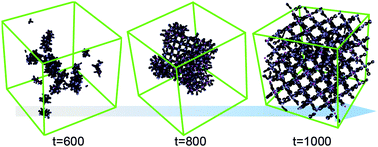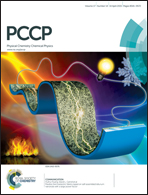Simulation of metal–organic framework self-assembly†
Abstract
Spontaneous growth of metal–organic frameworks (MOFs) composed of metal ions and 4,4′-bipyridine ligands was successfully demonstrated by molecular dynamics simulations, starting from a random initial placement of the metals and the ligands. The effect of the metal–ligand binding strength upon the MOF self-assembly was investigated. We found that the metal–ligand binding strength should be within a window around the optimum values for the regular MOF growth.


 Please wait while we load your content...
Please wait while we load your content...